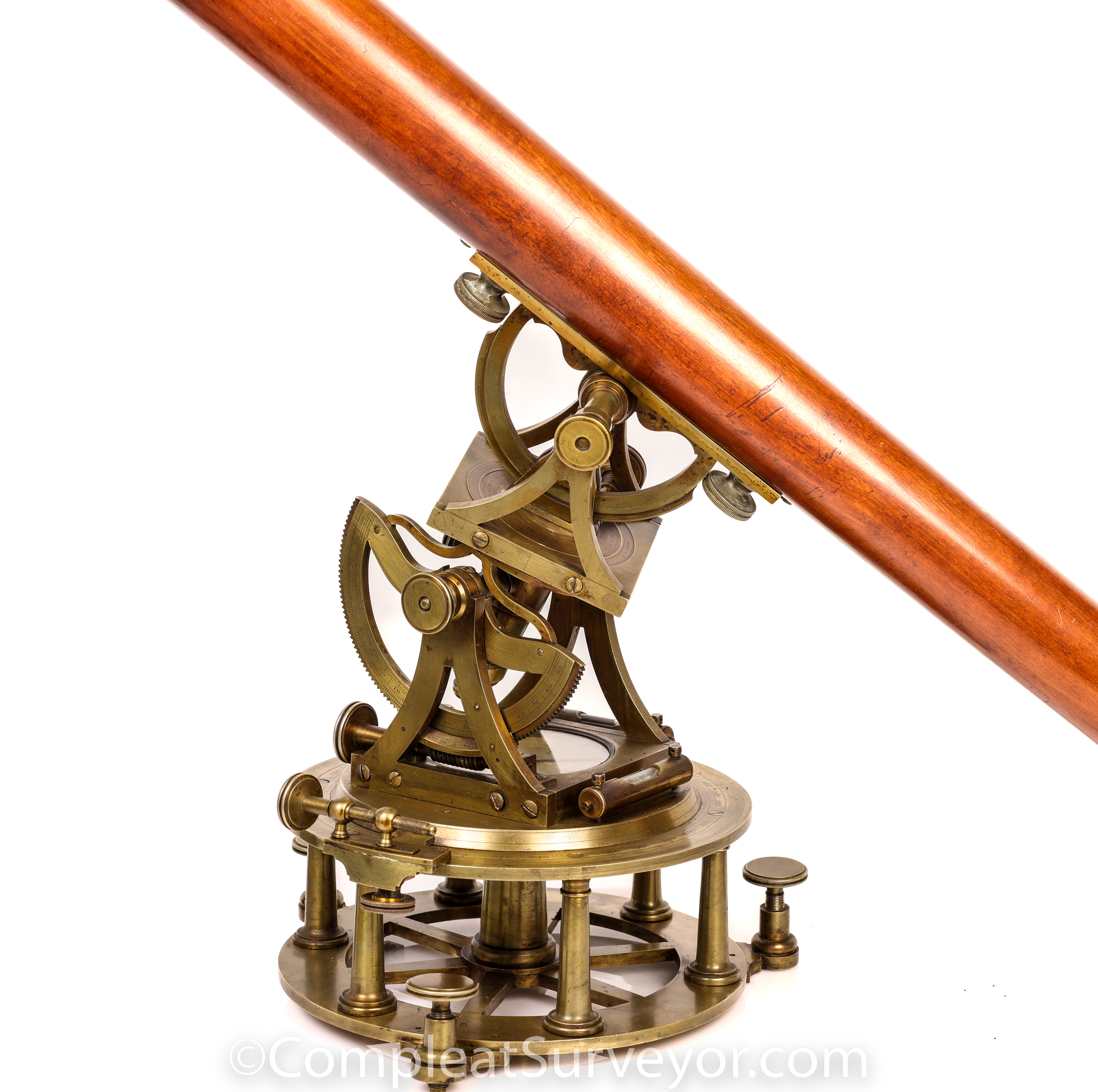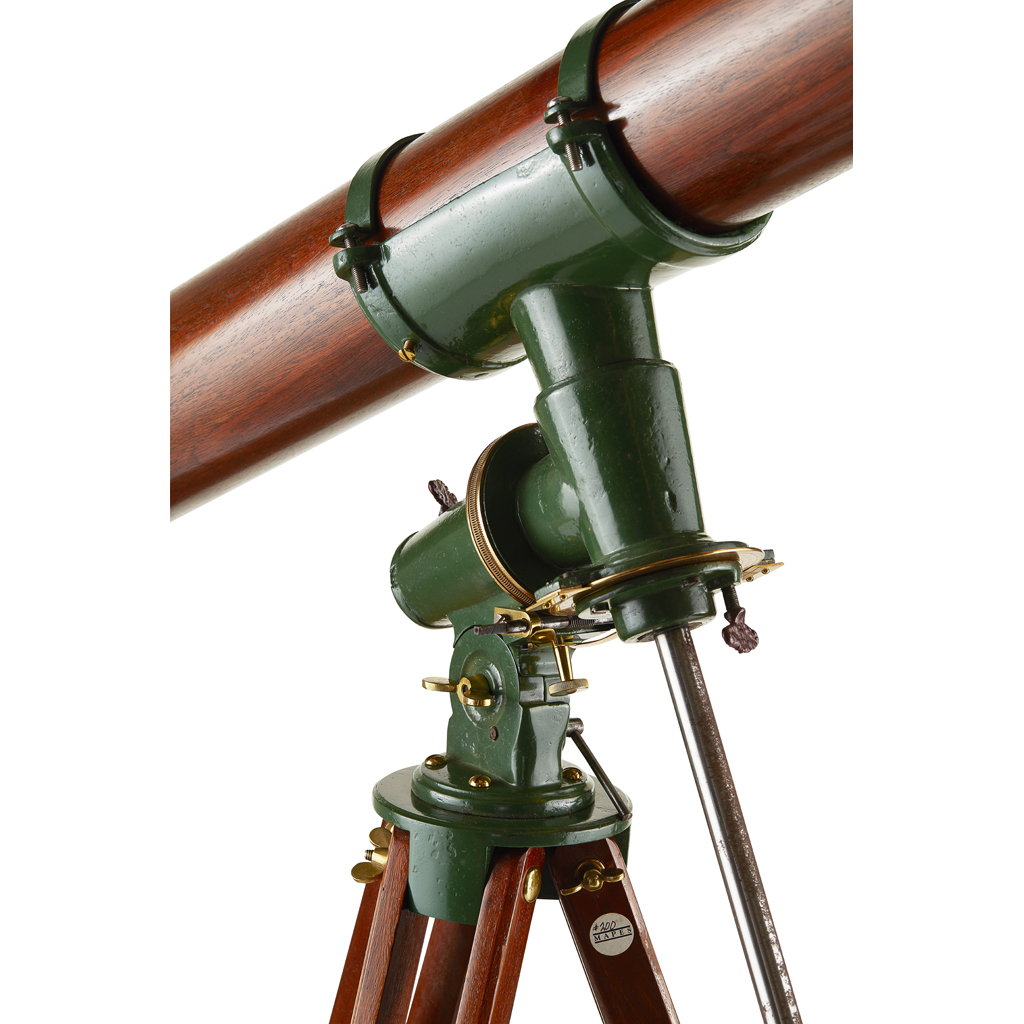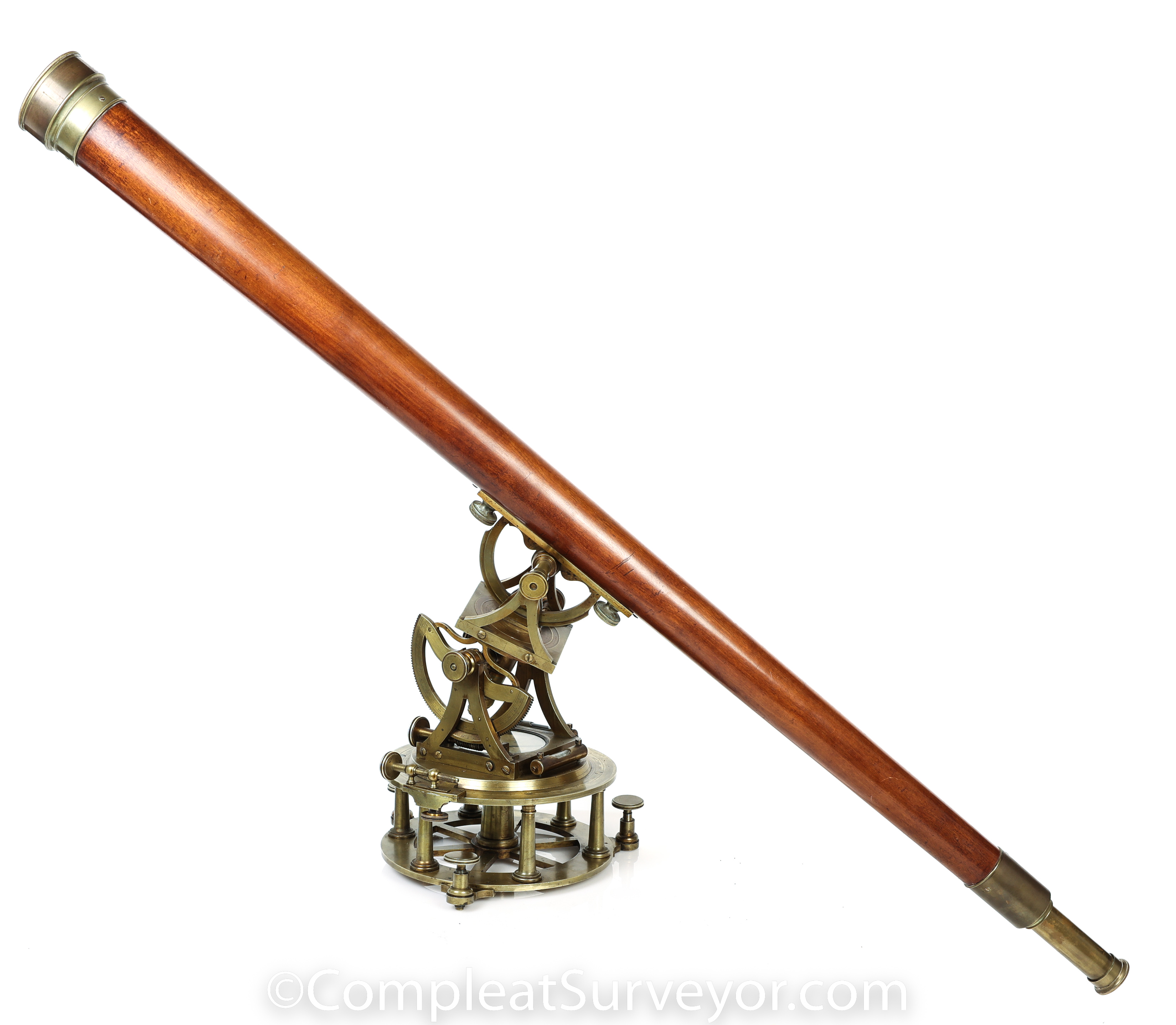
Amazing Benjamin Pike Jr Circa 1840s Equatorial Telescope
This is a an incredible instrument.
Equatorial Telescopes are designed to follow the rotation of the Earth, allowing the telescope to track celestial objects easily with a single motion as they move across the sky. With a normal telescope, you have to constantly adjust the telescope vertically and horizontally to track a celestial object over time.
James Short created the first commercially viable design for portable Equatorial Telescopes in the 1740s. Short published the design along with instruction on how to use the Equatorial Telescopes in 1749, which you can see here. Telescope Makers followed Short's basic design for 80 to 100 years, when various makers innovated better designs. Short's Design:
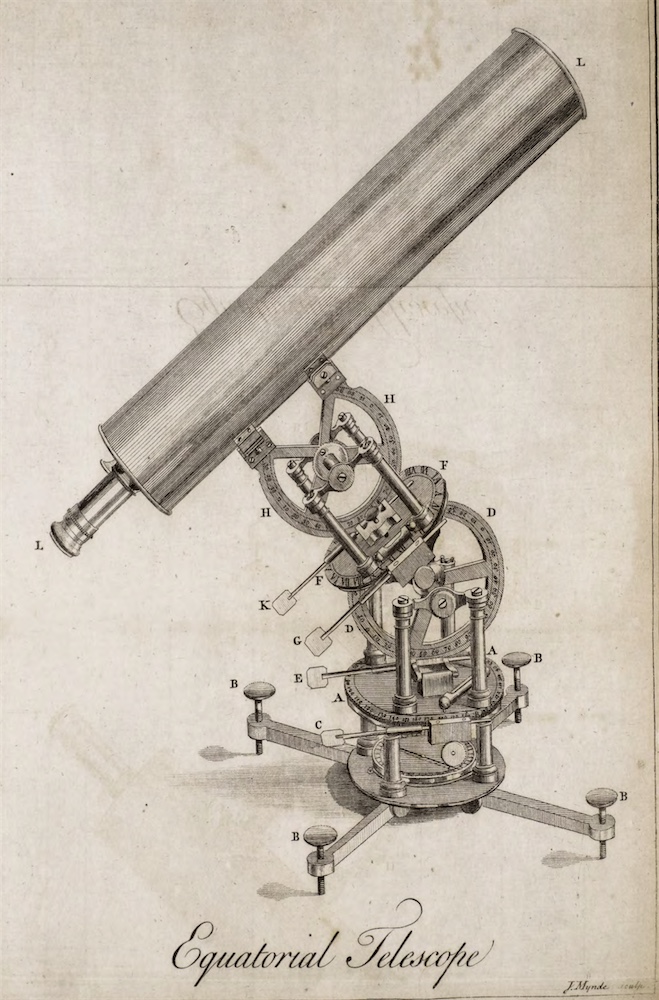
After Short published his design in 1749, the major scientific instruments makers like Adams, Dollond, Narne, Troughton, and Ramsden offered Equatorial Telescopes based on Short's design for sale to customers. The technically very advanced telescopes were targeted at well-heeled gentlemen who fancied themselves as amateur astronomers, and priced accordingly. Thomas Jefferson was one such buyer. The Monticello.org website (dedicated to preserving the memory and accomplishments of Thomas Jefferson) says:
"In 1793 Jefferson acquired the most valuable instrument in his collection, an equatorial telescope by Jesse Ramsden (1735-1800), whom he considered preeminent among makers. With "this noble instrument," as he called it, he fixed the meridian at Monticello and viewed the solar eclipse of 1811. Judged by one scholar to be "unquestionably the most sophisticated instrument in the United States" at the time, Jefferson's equatorial was the foundation of his favorite theory of a method for determining longitude by lunar distances without a timepiece. {Footnotes Omitted}
Benjamin Pike Jr. likely made this Equatorial Telescope in the 1840s, during the transitional period in portable Equatorial Telescopes from Short's original design for the mount to an improved design that differed significantly from Short's design. While Benjamin Pike Jr. imported a fair number of instruments from Europe, this instrument appears to be American designed and made, except for the compass. From a design perspective, the European made Equatorial Telescopes are fairly robust instruments with the mounts generally in the shape of a cylinder, and are fully able to support a telescope that is roughly 2x to 3x times the diameter of the top horizontal plate. The Pike Jr Equatorial Telescopes, on the other hand, is shaped more in the nature of a Christmas tree, and the telescope is 6x to 7x times the width of the top plate. I suspect that the Pike Jr design led to premature and excessive wear on the gearing that supported the telescope.
From a quality perspective, the Pike Jr. Equatorial Telescope is consistent with the quality that you see on other Pike and American made surveying instruments - generally a notch below the quality you typically see in European made surveying instruments. Take a look at the table below, which compares this 1840s Pike Jr. instrument to Equatorial Telescopes made by British makers during the 1700s and Pike Jr in 1856 in terms of dividing the circles and verniers:

With the design and other shortcomings, Pike's 1840s effort clearly fell short of the bar that the British makers set 70 to 100 years before. Based on this, I believe that the Equatorial Telescope offered here is a very early attempt by Benjamin Pike Jr to develop a commercially viable Equatorial Telescope for sale in America. Benjamin Pike Jr. offered a much more robust looking Equatorial Telescope in his 1856, which suggests that Pike Jr. recognized and corrected the major designed flaws of his early effort. If you look at Pike Jr's 1856 Equatorial Telescope offerings, you will see that the top part of the Equatorial Mount is MUCH larger and sturdier than the top part of the Equatorial Mount for the instrument offered here. You will also see from the table above that Pike's 1856 effort was competitive with what the British makers were doing in the 1700s.
According to the oral history of this instrument, this Equatorial Telescope spent a good deal of its life at Stanford University. I'm not a huge believer in oral history, but I wouldn't be surprised if the oral history is right in this case. This instrument has seen considerable use and has been repaired a number of times, which would be consistent with university ownership.
This Pike Jr. Equatorial Telescope has a base diameter of about 8 inches and is a bit less than 12 inches tall. The telescope is 42 inches when the pull-out tube is closed. The telescope works ok, and somewhat surprising to me the image is erect, not inverted.
Most of the British made Equatorial Telescopes use a slow motion adjustment
This Pike Jr. Equatorial Telescope looks stunning when displayed. I've been surrounded by high-end surveying instruments (solar compasses and transits, a large Adams Theodolite, etc) all my life. High-end surveying instruments look great when displayed as well, but pale in comparison when placed next to the Pike Jr. Equatorial Telescope. Trust me on this one.
I scoured the internet looking for portable Equatorial Telescopes that used Short's 1740s designed. Not surprisingly, I didn't find all that many. These were seriously expensive instruments back in the day so very few people could afford to buy one. Interestingly, this is the ONLY Equatorial Telescope based on Short's 1740s design I found that was made by an American maker. From what I can tell, Benjamin Pike Jr might have been the only maker in America who used Short's original design - other makers like Fitz offered Equatorial Telescopes using the improved Equatorial Mount design that replaced Short's design - see pics below. There might be another Pike Jr Equatorial Telescope out there somewhere, but I didn't find any mention of one anywhere on the internet.
The above pics show the Circa 1840s Pike Equatorial Mount (based on Short's 1740s design) compared to a Circa 1850 Henry Fitz Equatorial Mount (based on an evolved designed). While the Fitz Mount is more advanced and sturdy, the Pike design is more unique and intriguing. The Fitz sold at auction for about $15k in 2007.
Equatorial Telescopes based on Short's 1740s design are at the top of the food chain in terms of collectible telescopes. The last one sold was a very nice W. & S. Jones that cleared $27k in a 2020 Bonhams auction.
Two Pike's Equatorial Telescope 360 Degree Views

You can see a 360 degree view of the instrument by clicking on the link below. You can ZOOM in for a High Resolution View of any angle.
You can control the Rotation and Zoom two ways:
(1) There is a control panel on the bottom left hand side. The arrows control Rotation and the magnifying glass controls Zoom.
(2) Your mouse can control Rotation and Zoom as well. You control Rotation by dragging the Mouse from side to side. You control Zoom with the scroll wheel. I personally prefer the Mouse approach.
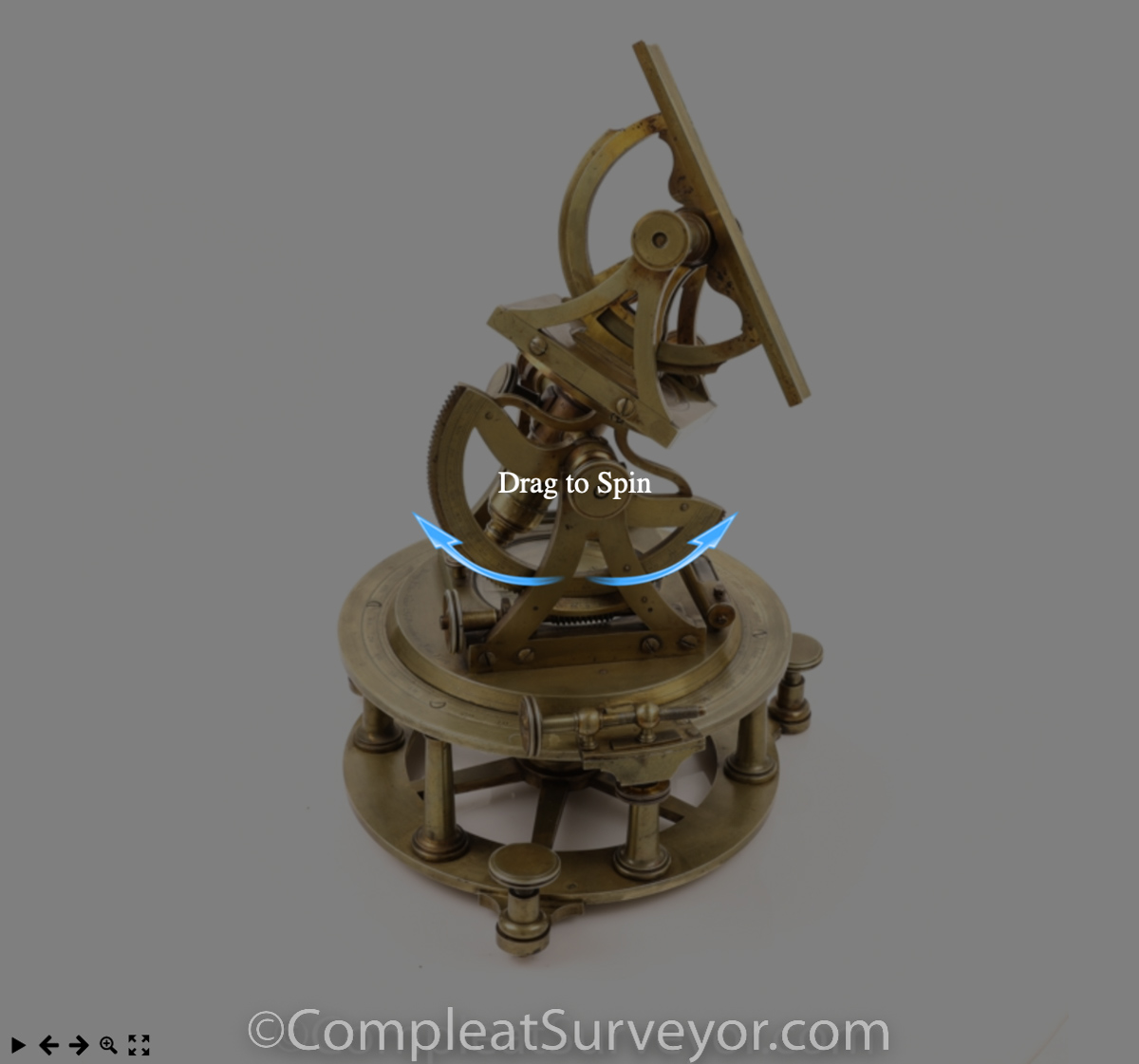
You can see a 360 degree view of the instrument by clicking on the link below. You can ZOOM in for a High Resolution View of any angle.
You can control the Rotation and Zoom two ways:
(1) There is a control panel on the bottom left hand side. The arrows control Rotation and the magnifying glass controls Zoom.
(2) Your mouse can control Rotation and Zoom as well. You control Rotation by dragging the Mouse from side to side. You control Zoom with the scroll wheel. I personally prefer the Mouse approach.
Not For Sale - On Display Only
Additional Pictures
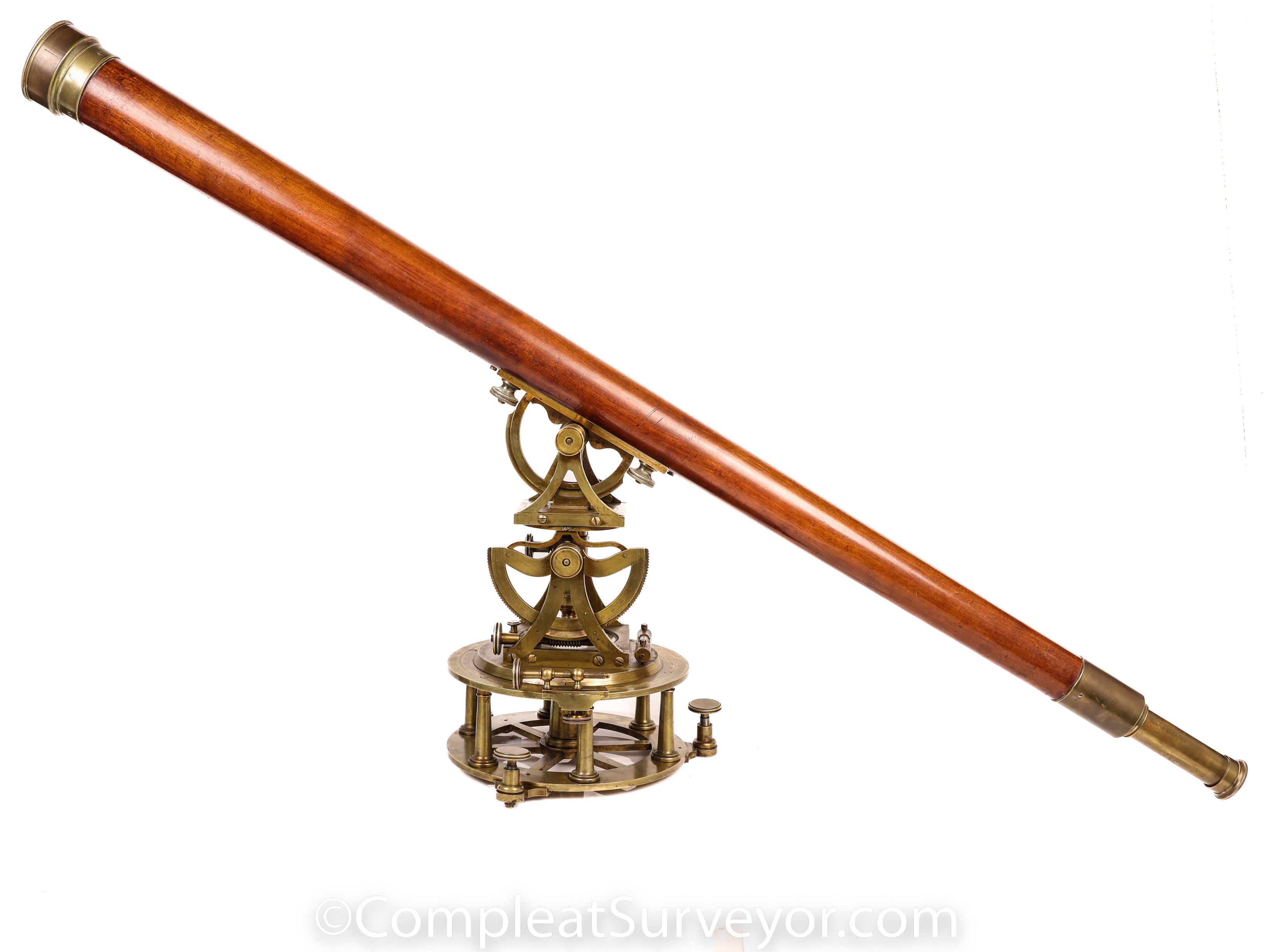
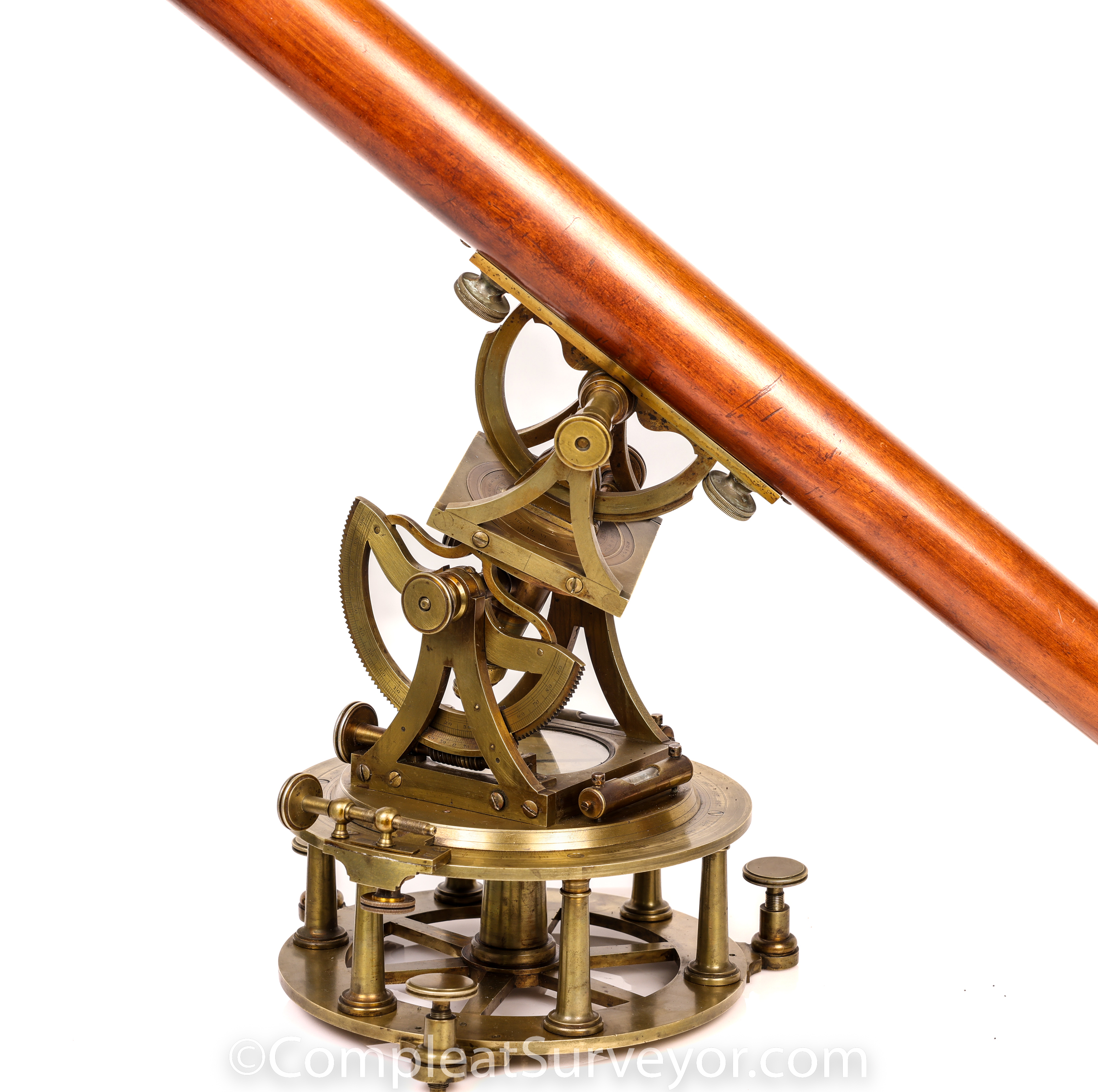
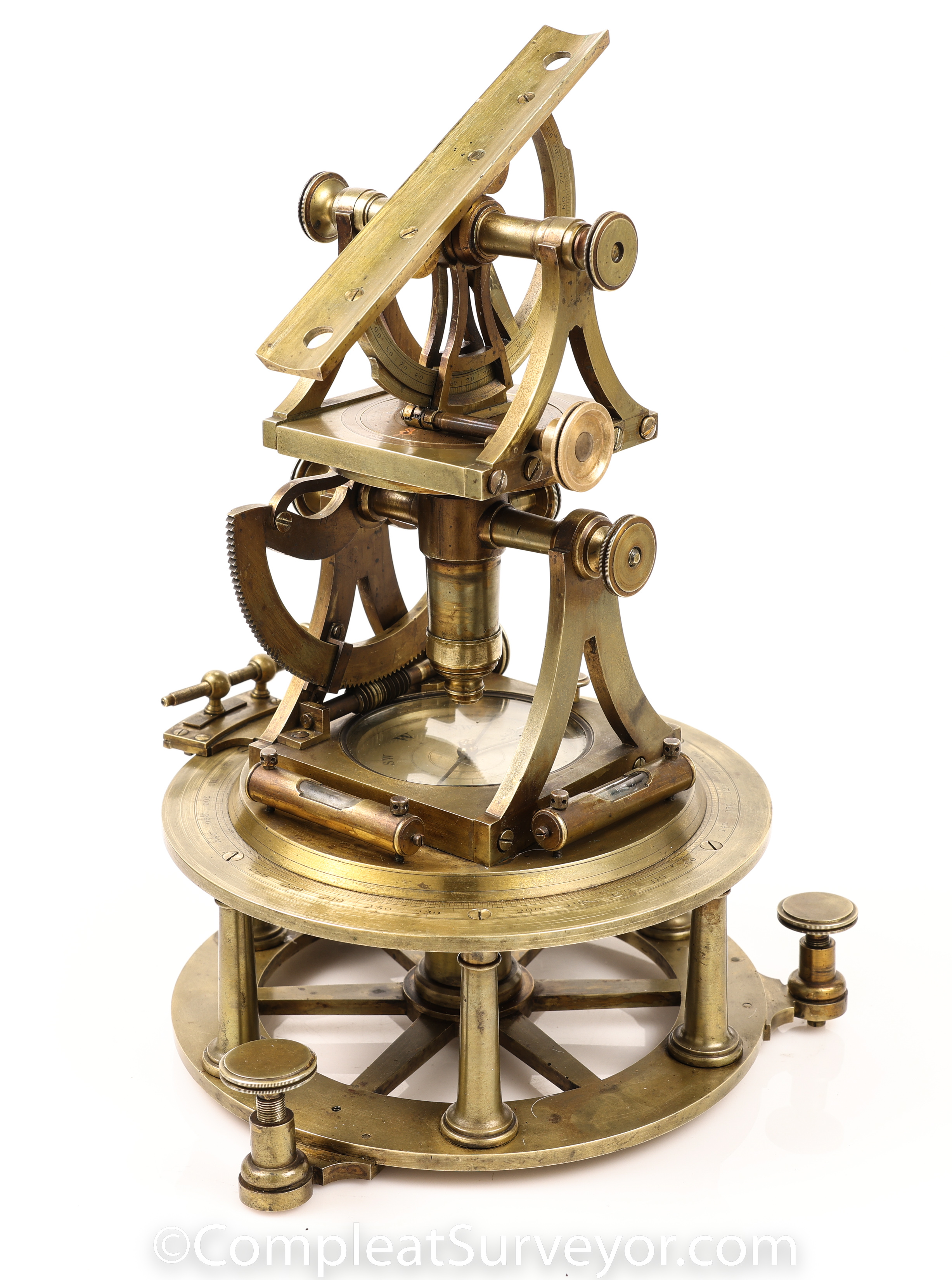

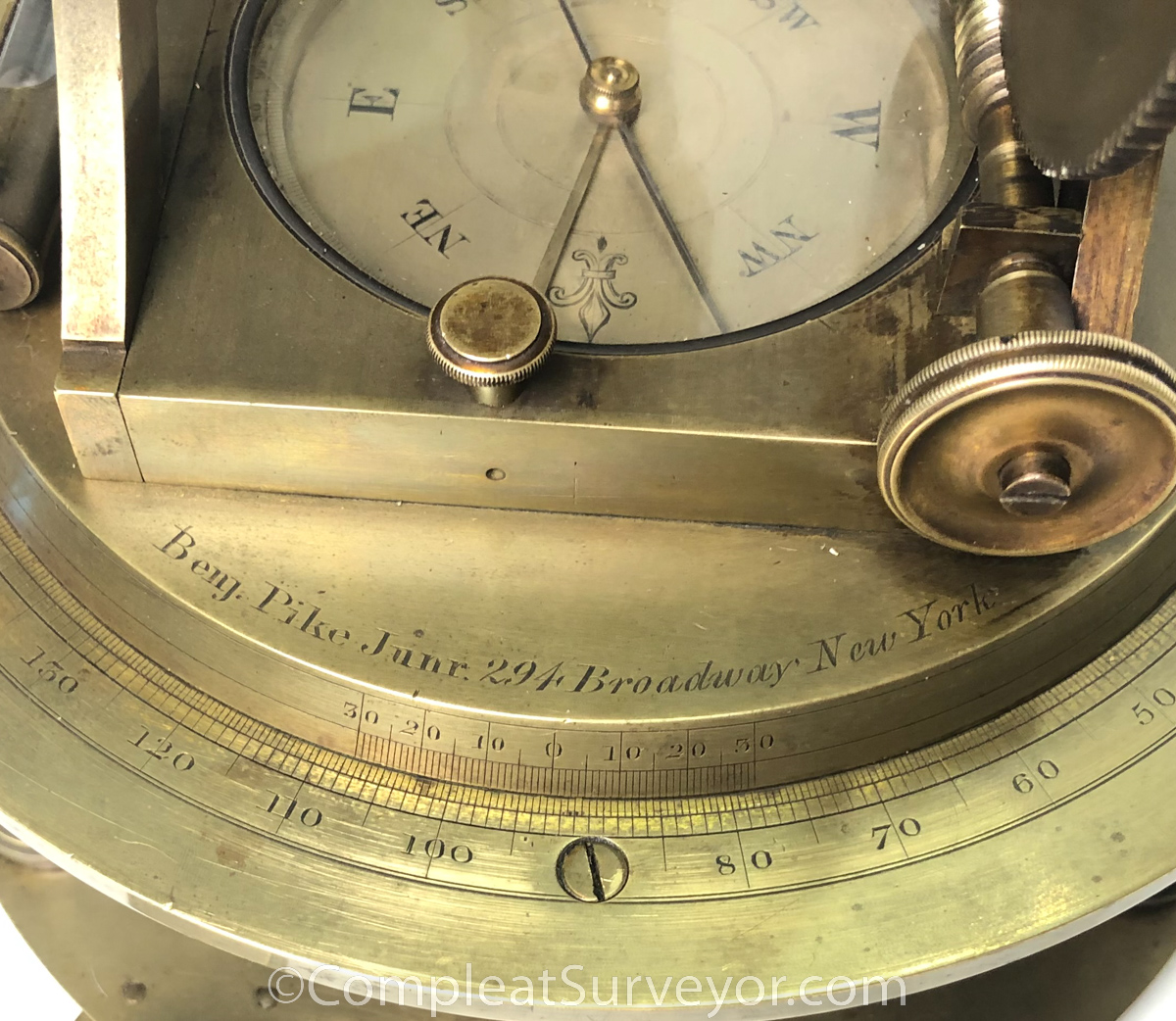
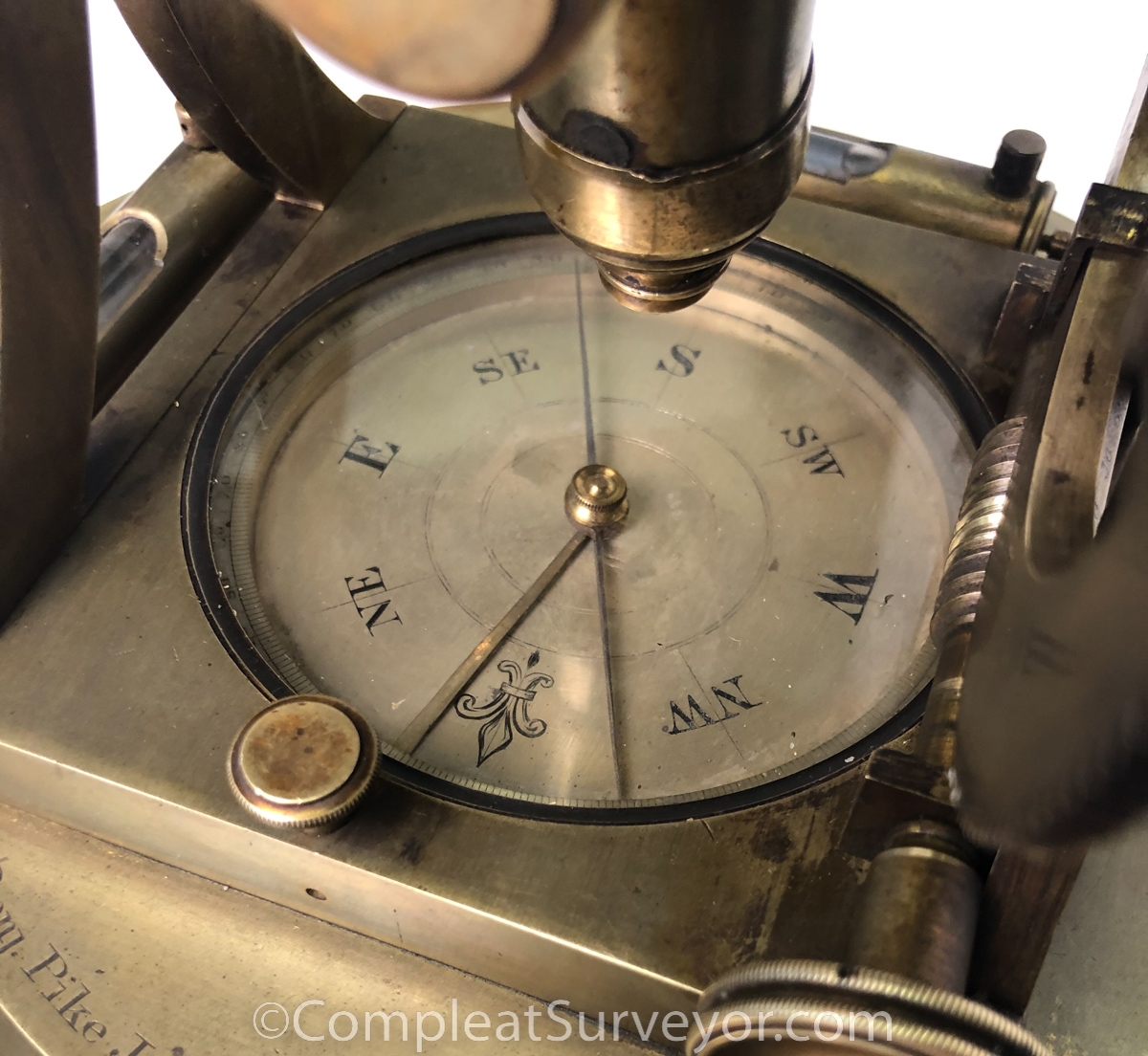


© 2020 Russ Uzes/Contact Me
